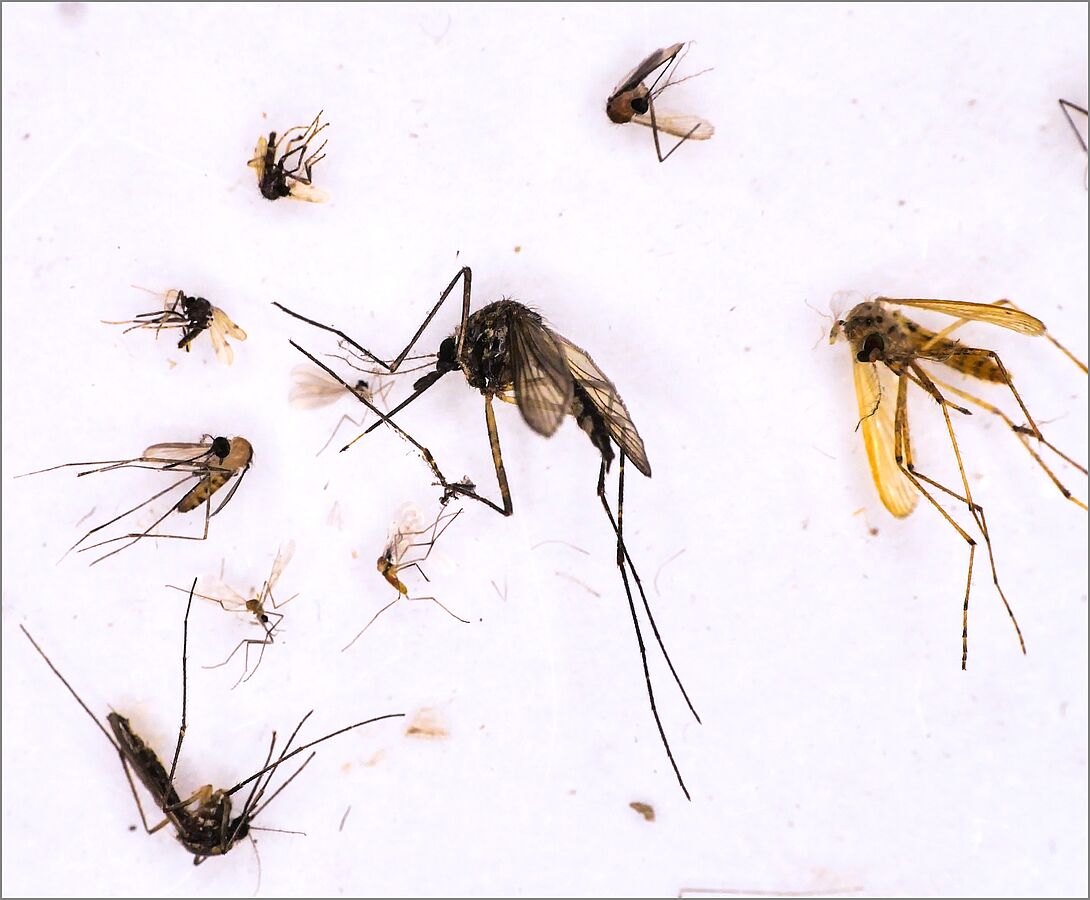How are environmental changes, loss of biodiversity, and the spread of pathogens connected? The answer is a puzzle. Scientists from Charité – Universitätsmedizin Berlin in cooperation with the Leibniz Institute for Zoo and Wildlife Research (Leibniz-IZW) have now described one piece of that puzzle in the journal “eLife”, showing that the destruction of tropical rainforests harms the diversity of mosquito species. At the same time, more resilient species of mosquitoes become more prevalent – which also means the viruses they carry are more abundant. If there are many individuals of a given species, those viruses can spread quickly.
For their study, researchers from Charité teamed up with the Leibniz Institute for Zoo and Wildlife Research (Leibniz-IZW) to investigate how clearing rainforests to make way for coffee or cacao plantations or human settlements affects the prevalence and diversity of mosquitoes and the viruses they carry. The study, which brings together the fields of virology and biodiversity research, was led by Prof. Sandra Junglen, head of the Ecology and Evolution of Arboviruses research group at the Institute of Virology at Charité.
For their research work, the team first caught mosquitoes around Taï National Park in the West African country of Côte d’Ivoire. There is a broad range of land uses there, from pristine rainforest to secondary forest, cacao and coffee plantations, and villages. “We identified the species of mosquitoes we had caught and tested them for viral infections,” explains Kyra Hermanns of the Institute of Virology at Charité, the first author of the study. “Then we looked at how the composition of mosquito species differs across the different land use types, where certain viruses are present, and how prevalent they are.”
Resilient mosquito species prevail over others
There are many different viruses in a healthy ecosystem such as a pristine rainforest. The main reason is that there is a broad range of animal species living there that can carry the virus, acting as hosts. This is because viruses are always tied to their hosts.
If there is a change in the ecosystem, it affects the viruses as well, Junglen explains: “We discovered 49 virus species, with the greatest diversity of hosts and viruses observed in untouched or minimally disturbed habitats.” Most of the 49 different virus species were relatively rare in the areas studied. However, nine of them were commonly found in multiple habitats, with the prevalence of five virus species increasing in habitats that had been disturbed and reaching the highest figures in human settlements.
“This means that the clearing of tropical rainforests causes a decrease in the diversity of mosquito species, which changes the composition of host types. Some resilient mosquito species have multiplied very successfully in the cleared areas, bringing their viruses with them,” Junglen and Leibniz-IZW scientist Prof. Stephanie Kramer-Schadt, who conducted the association analyses of the mosquitos with viruses and habitats, explain. The composition of a given community of species thus has a direct effect on the prevalence of viruses: “If one host species is very abundant, it is easier for viruses to spread,” Junglen adds. “All of the viruses we found to be more common were demonstrated to be present in a certain mosquito species. The viruses belong to different families and have different properties. That means we were able to show for the first time that the spread of the viruses is attributable not to a close genetic relationship, but to the characteristics of their hosts – especially those mosquito species that adapt well to changing environmental conditions in habitats that have been disturbed.”
New insight into the dynamics of infectious disease
The viruses the researchers found only infect mosquitoes and, as things currently stand, cannot be transmitted to humans. Still, they are a valuable model for understanding how changes in the diversity of a community of species affect the presence and prevalence of viruses. “Our study makes clear just how important biodiversity is, and that decreasing biodiversity makes it easier for certain viruses to thrive because it causes their hosts to become more abundant,” Junglen notes.
“Previously, these kinds of processes were studied almost exclusively using individual pathogens and individual hosts. Now we have a more complete picture that we can use for further research,” she explains. As their next step, the researchers plan to study additional habitats in other countries, with one goal being to pinpoint the exact factors that affect the diversity of mosquito species under land-use change, and the characteristics that viruses need to have in order to spread with their hosts.


